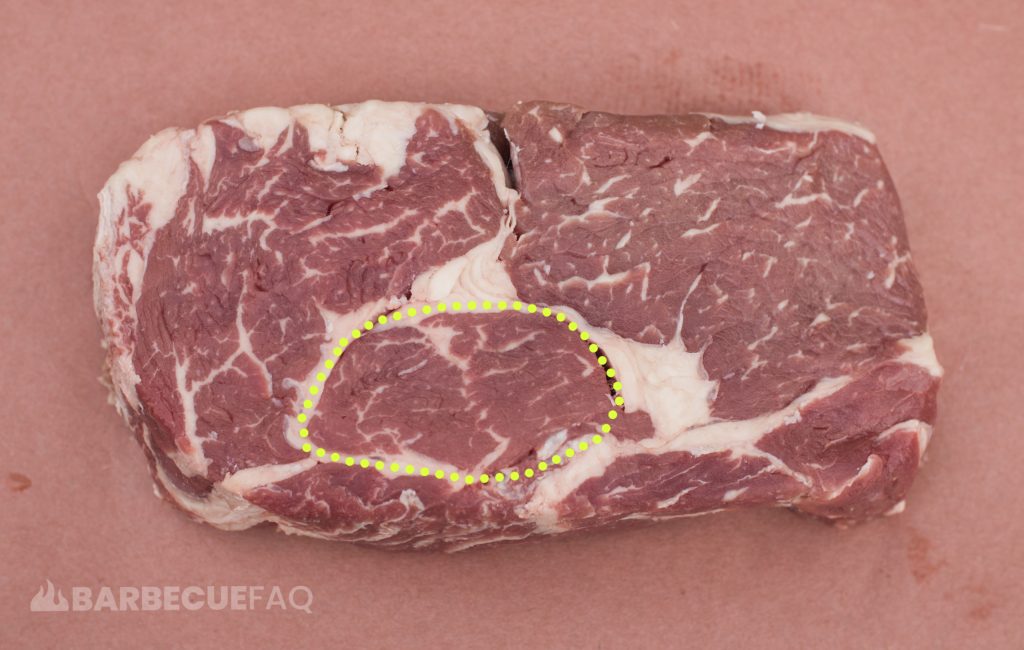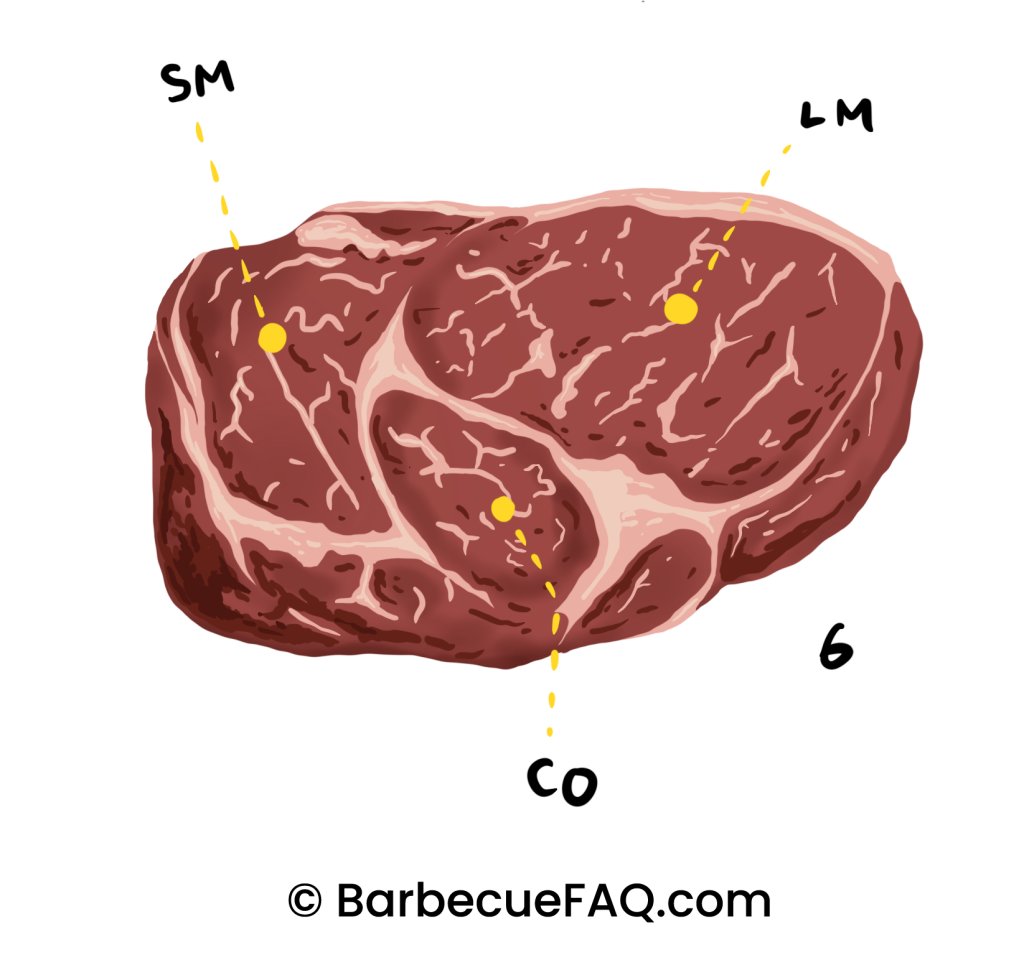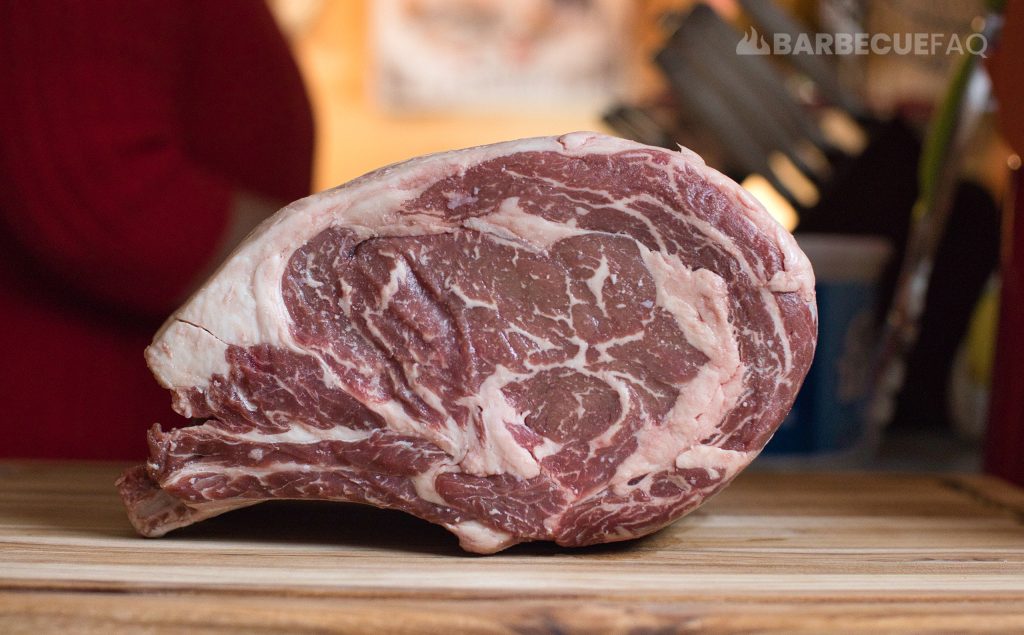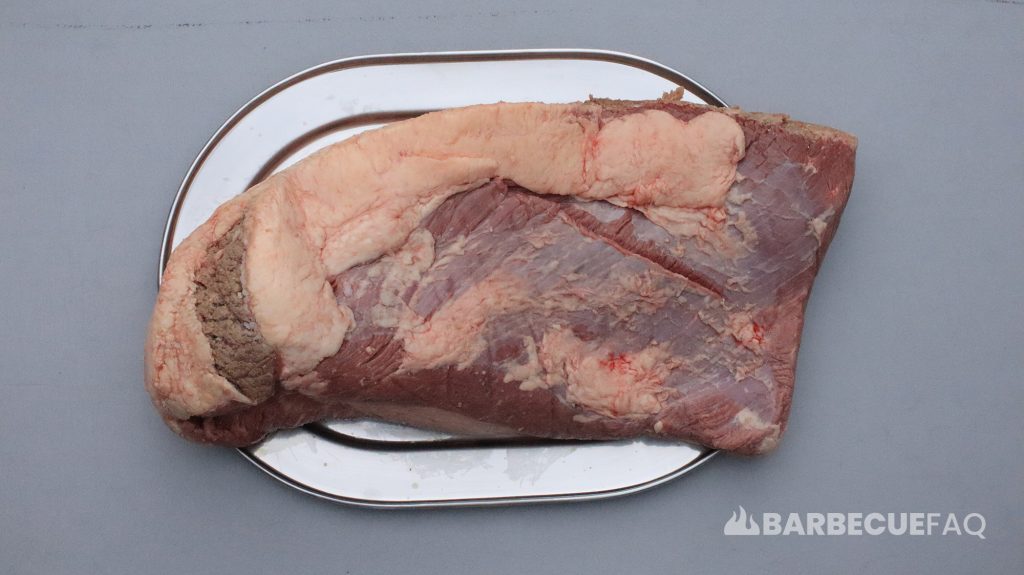A whole prime rib consists of meat from the upper rib bones (ribs 6-12).
There are 2 whole “prime ribs” per cow.
In a wholesale store you may also come across a standing rib roast (7 bones) which is the entire rib primal.

While it’s possible to find whole, seven-bone rib roasts, this roast weighs anywhere from 14-22 lbs.
Not only is that a lot of meat, it’s also very expensive.
Butchers and retailers are cognizant of this fact and Prime Rib is sold as two cuts:
- First Cut Prime Rib
- Second Cut Prime Rib
Muscle composition is what separates these two “types” of prime rib.
Muscle Composition of the Prime Rib
A Prime rib is comprised of several muscles:
- Longissimus Dorsi, Eye of the Ribeye
- Spinalis Dorsi, Ribeye Cap
- Complexus
*There are a few others but most aren’t worth mentioning.
These 3 main muscles are found within the rib primal and can be of different sizes based on which part of the rib they’re taken from.
For instance, in ribs 9, 10, 11, and 12, the complexus muscle may not be present.
Where-as in ribs 6, 7, and 8 it’s readily apparent.
Longissimus Dorsi – The “Eye” of the Ribeye
The longissimus dorsi is the “eye” of the ribeye – when someone is after a prime rib, they a bigger EYE muscle.

Spinalis Dorsi – The Ribeye Cap
To folks who really like ribeye steak, they would likely tell you that the “cap” of the ribeye is their favorite.
It’s intensely marbled and is supremely tender. As you move towards the loin (the back of the cow), this muscle gets smaller.

Complexus
The complexus muscle is similar to the ribeye cap in terms of marbling and tenderness, only it’s typically surrounded by swaths of hard fat, which most consumers don’t like.

These muscles directly affect the “type” of prime rib you can buy.
Namely – 1st and 2nd cut prime rib.
What is “First Cut” Prime Rib
In terms of muscle composition, use the following legend:
- LM = Longissimus Dorsi or Eye of the Ribeye
- SM = Spinalis Dorsi or Ribeye “Cap”
- CO = Complexus
The images below are rough illustrations based on Butcher schematics.
Rib 10 looks like this:

Rib 11 looks like this:

Rib 12 Looks like this:

ALL of these rib steaks would be then be combined to form a single, 3-bone, first cut prime rib roast.
The biggest take-away here is that there aren’t huge isolated fat pockets, the the Ribeye (LM) is quite large and there’s far more lean meat.
You also still get some of the ribeye cap (SM) – just less of it.
What is “Second Cut” Prime Rib
Use the following legend:
- LM = Longissimus Dorsi or Eye of the Ribeye
- SM = Spinalis Dorsi or Ribeye “Cap”
- CO = Complexus
Rib 6 Looks like this:

Rib 7 Looks like this:

Rib 8 Looks like this:

This roast is “2nd cut” because it has smaller “ribeye” muscles, more swaths of hard fat, and a bigger “cap.”
These work better for steaks than they do prime rib.
Does Prime Rib Mean that the Beef is Graded “Prime”?
Not necessarily.

This is a really popular point of contention, but if we look at the USDA naming policy handbook:
PRIME RIB OF BEEF OR STANDING BEEF RIB ROAST FOR PRIME RIB:
pg. 146.
These products do not have to be derived from USDA prime grade beef.
This area of the rib is considered prime because it has a thick fat cap and features heavily marbled meat. Meaning, retailers can name the cut any number of ways, including “prime rib roast” even if it’s not prime graded.,
The reason I bring this up is because A LOT of resources will confidently state that “prime rib” is a legal designation and can’t be sold with that namesake unless it’s “prime.”
Based on the above, that statement is categorically untrue.
Other Names for Prime Rib
To name a few:
- Rib Roast
- Standing Rib Roast
- Prime rib roast
- 3-bone Rib Roast
- Prime Rib
“Rib Roast” refers to the fact that it’s rib meat, and roast refers to how its cooked – it’s slow roasted.




